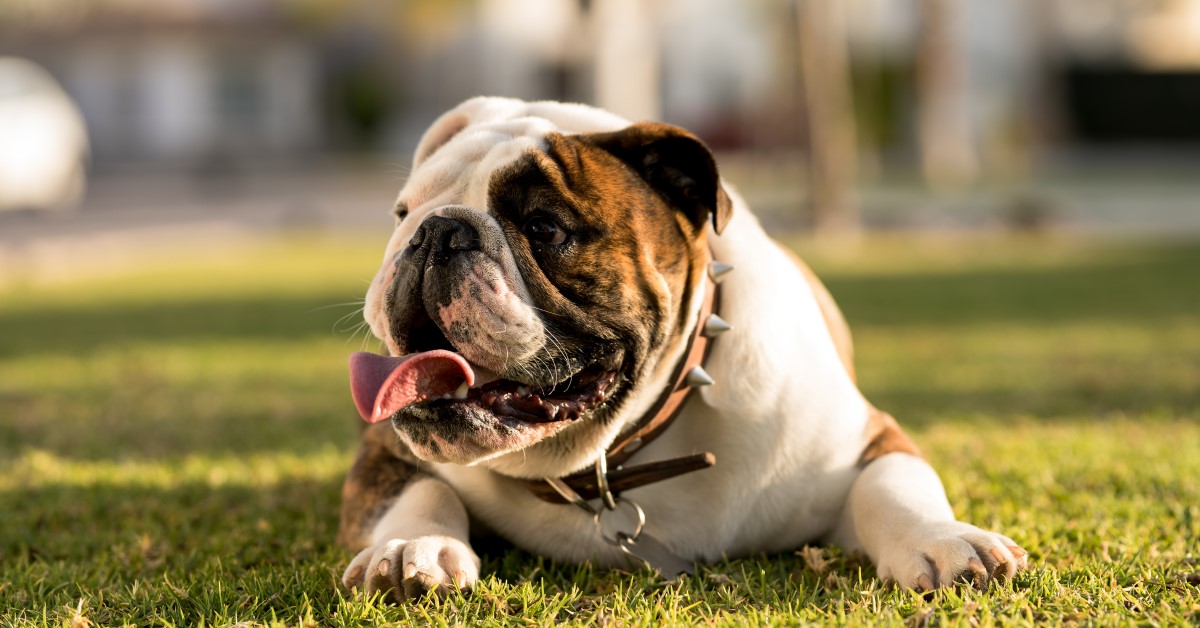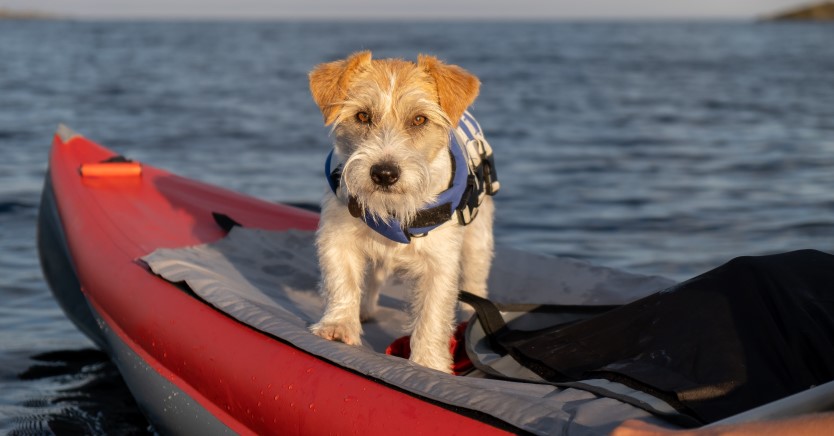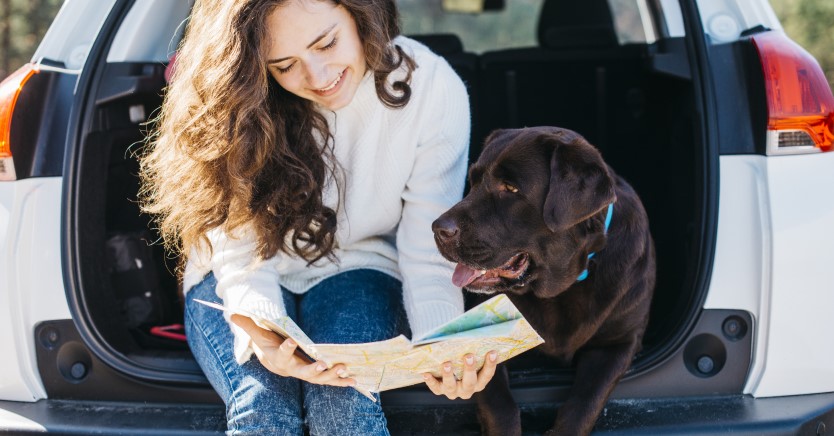Signs That Your Dog Needs to Go on a Diet
Some dogs look a bit more plump than usual. According to a study published in the International Journal of Obesity and Related Metabolic Disorders, excessive weight and fat accumulation in domesticated animals is a common clinical condition and represents a challenge among veterinarians.

Should Your Dog Go on a Diet? Watch for These Signs.
Oval Body Shape
Look at your dog from above. If you notice that your fur baby looks rather oval-shaped than somewhat of an hourglass, your pup is probably overweight.
Also, you should be able to feel his ribs without a thick layer of fat over them. The abdominal tuck should also be apparent.
If your dog has no waist and there’s no distinction between his stomach and chest, your pup is likely overweight. If you’re unsure, it’s best to seek professional help.
Heavy Breathing When Walking
Panting is common among dogs, especially when they’re excited or hot. According to a study, panting is their way to cool down. However, if your pup pants excessively after a little physical activity, it may be overweight.
With the excess body weight they carry, dogs may also get tired quickly and walk a bit slower than usual.
If your pup used to follow you everywhere around the house and then suddenly skips its turn when you take a trip to the second floor, it may be an indication that it’s having trouble with its weight.
Observe your pup while you’re in the living room. Does it need at least three attempts before it can jump on the couch? If yes, you need to check in with your vet to confirm whether its weight is the problem.
Inactivity
Some dogs are inherently playful. If your once energetic pup suddenly becomes lethargic, it may be a sign that something is wrong.
You should see a vet if your fur baby becomes uninterested in going for a walk, playing, or participating in activities it usually does.
The aging process may also affect your canine companion. Therefore, it needs more sleep and rest. However, senior dogs are also prone to being overweight, which can leave them drained of energy.
In North America, approximately 25-30% of the general canine population is obese. Moreover, about 40-45% of dogs aged five to 11 years old weigh higher than the standard weight.
Tips to Help Manage Your Dog’s Excess Weight
There have been no pharmaceutical compounds licensed for weight loss in dogs yet. Therefore, dietary therapy is the cornerstone of weight management in dogs. Behavioral management and increasing exercise are helpful adjuncts.
Below are some strategies to help your dog maintain a healthy weight:
Schedule Portioned Feedings
If your dog is overweight, chances are it’s eating more than it needs. To help your pup shed some extra pounds, ensure it eats at scheduled times throughout the day.
Letting your fur baby scarf down on its food all day long means you don’t know how much it’s consuming.
As a responsible pet owner, you need to practice portion control. Know exactly how much your pup eats and slowly reduce the amount to find out how much food keeps it satisfied.
If you’re unsure about the right portion size for your dog, consult your vet to confirm. In addition, consider how many hard or soft chews it gets each day and subtract those from its daily meals.
Monitor Your Dog
An overweight dog may face an array of health problems. If your dog already has an existing ailment, weight issues may also exacerbate such an illness.
You can install security cameras to monitor your dog whenever you’re not home so you can observe its behavior. You can also share the video with your vet to help with the diagnosis.
Increase Your Dog’s Physical Activity
Increasing your dog’s physical activity is a helpful approach to help your fur baby shed some weight. When used in combination with a dietary plan, exercise promotes fat loss and may assist in lean tissue preservation.
There’s also some evidence that engaging in physical activity may prevent the rapid regaining of weight after successful weight loss. Suitable exercise strategies for dogs include swimming and lead walking.
One of the psychological benefits of interacting with your pup is mindfulness. So if you’re into yoga, you can practice it with your fur baby to make it a lot more interesting. Just allow your pup to act as it will while doing “doga” and let mindfulness come into play.
Ensure Everyone’s on Board
Ensure all your family members are on the same page regarding your dog’s weight loss journey.
If you have an overweight dog and someone from your household is sneaking extra soft chews to it, you’re not going to see much progress in your fur baby’s weight.
Making sure everyone in your household is on board with your plan is as essential as the effort you put toward the change in your dog.
Visit the Vet
Visit your vet’s office and have your dog examined. Your veterinarian can tell whether your pup is overweight based on its size and breed.
Your vet will also examine your fur baby’s body and compare it to a body condition score chart, which ranks a dog’s body type by shape. Usually, scores range from one to nine, with nine being extremely obese.
If you keep track of your pup’s progress, you’ll learn how much food works for maintaining a healthy weight. For this reason, it’s recommended to take your dog in for regular weigh-ins.
Other Essential Tips
Develop a Weight Loss Plan for Your Dog
If your vet establishes that your dog is significantly overweight, you’ll have to start a weight-loss plan. Ensure to reduce calorie intake and increase the amount of time for exercise.
Additional dietary factors that may contribute to weight loss include conjugated linoleic acid (CLA), L-carnitine supplementation, and the use of high-fiber diets.
L-Carnitine is a form of amino acid synthesized in the kidney and liver in the presence of ascorbate. Research shows that dietary supplementation of L-carnitine increases lean mass and improves nitrogen retention.
Pamper Your Dog
Food is not the only way you can show your love to your fur baby. You can pamper it by giving it a massage.
You may rub a small amount of CBD oil onto your hands and then gently pat your dog’s coat. Run your fingers through his fur and apply a little more oil into his skin.
Massage therapy may help soothe sore muscles. Ensure that your pup is in a calm submissive state before you start massaging it.
Stay Strong
Food is love for most dogs, and as a fur parent, you want to see them happy. So it may be difficult for you to get your fur baby on a weight loss program.
As you begin modifying your dog’s eating habits, you may feel bad when you see your pup begging for food. However, there’s no need for you to be guilty. Even if your fur baby loves food, you can substitute the fun you have with exercise and more play.
If helping your pup reach a healthy weight is becoming a challenge, you should consult your vet for food recommendations. Don’t worry! Your vet will ensure your beloved fur baby will get adequate nutrition, even with smaller meals.
An overweight dog is neither healthy nor happy. The dangers of weight issues are also too big to ignore. While it might be hard work, keeping your fur baby at a healthy weight will ensure a lifetime of joy for both of you.
Ready to start saving money on pet wellness care?
Then take a look at Mint Wellness, the pet wellness plan that provides fast reimbursement on routine pet care. Save on vaccinations, wellness exams, preventatives, dental, and more!
Learn More


